Cybersecurity for Remote Workers: Your 2024 Guide
Last Updated on April 1, 2024
The workplace has undergone a permanent transformation. Remote and hybrid work models are here to stay, offering businesses and employees greater flexibility. However, this shift has exposed a critical vulnerability: cybersecurity. With employees accessing company data from various locations, often using personal devices and less secure home networks, the risk of cyberattacks has significantly increased.
This article will explore the evolving cybersecurity landscape for remote workers in 2024. We'll uncover the latest threats facing businesses, offer actionable strategies, and share insights to help safeguard your business and empower your remote workforce to stay cyber-secure.
Table of Contents
- 1 Traditional Threats, Amplified Risks: Phishing in a Remote World
- 2 Network Security: The Risks Beyond the Office Walls
- 3 Solutions: Strengthening Your Remote Network Defenses
- 4 Endpoint Vulnerabilities: Ransomware and Beyond
- 5 Protecting Your Endpoints: Safeguarding the Gateways
- 6 Emerging Threats & Advanced Considerations
- 7 Solutions for a Secure Remote Future
- 8 The Power of Employee Education: Building a Cybersecurity Culture
- 9 Conclusion: Securing Your Business in a Remote World
Traditional Threats, Amplified Risks: Phishing in a Remote World
Phishing attacks have long been a cybersecurity scourge, but remote work has made them even more dangerous. Employees outside the traditional office lack the in-person support and casual conversations that can help identify potential scams. Here's why phishing poses a greater risk for remote workers:
- Isolation: Remote workers may not have immediate colleagues to discuss suspicious emails, increasing their chances of falling for a convincing attack.
- Increased reliance on email: Remote teams rely heavily on email communication, providing more opportunities for attackers to slip a phishing email into the mix.
- Spear-phishing gets more sophisticated: Attackers now use social media and publicly available information to create highly targeted spear-phishing emails that appear legitimate, even to the most vigilant employees.
- AI-powered phishing: Attackers increasingly use AI tools to generate incredibly deceptive phishing content that's even harder to identify.
Network Security: The Risks Beyond the Office Walls
When employees work remotely, ensuring network security becomes far more complex. Traditional firewalls and secure office Wi-Fi are no longer enough. Here's a breakdown of the primary risks:
- Public Wi-Fi: Coffee shops, airports, and other public hotspots are notoriously insecure. Hackers can easily intercept data or launch attacks on devices connected to these networks.
- Compromised Home Networks: Home networks often lack the robust security of corporate environments. Unsecured routers or vulnerable IoT devices (smart speakers, thermostats, etc.) can act as gateways for attackers.
- Zero-Trust Networks: The traditional “trust but verify” approach isn't enough. Zero-trust principles assume no user or device is inherently trusted. This is critical when employees access sensitive data remotely.
Solutions: Strengthening Your Remote Network Defenses
Implementing a multi-layered approach is vital for robust network security for your remote workers. Here are the essential components:
- Virtual Private Networks (VPNs): VPNs encrypt data transmission between an employee's device and company servers. This prevents unauthorized access, even on insecure networks. Consider mandating VPN use for all remote workers when handling company data.
- Zero-Trust Implementation: Zero-trust models demand continuous authentication and authorization. Consider solutions like micro-segmentation to restrict access and minimize damage potential, even if an attacker breaches a device.
- Secure Home Networks: Educate employees on securing their home Wi-Fi. This includes strong passwords and router updates and avoiding using public hotspots for work whenever possible.
- Endpoint Security: Devices like laptops and smartphones are like gateways to your network. Enforce strong endpoint security software, regular updates, and employee training on identifying and avoiding malware.
Endpoint Vulnerabilities: Ransomware and Beyond
Endpoints – laptops, smartphones, tablets – are the primary gateways for cyberattacks in a remote environment. Let's examine why they're targets and the growing threat of ransomware:
- Ransomware Surge: Ransomware attacks, where hackers encrypt and lock down your data until a ransom is paid, are skyrocketing. Remote workers are prime targets, and business consequences can be devastating.
- Outdated software: Unpatched devices are easy prey. Attackers exploit known vulnerabilities to break into systems and deploy malware or ransomware.
- BYOD Policies: “Bring Your Own Device” policies can expose businesses to risk if personal devices don't meet security standards.
- Human Error: Employees may unintentionally download malware, click malicious links, or fall for social engineering scams, putting company systems at risk.
Protecting Your Endpoints: Safeguarding the Gateways
Reinforcing your endpoint security will significantly reduce the attack surface for hackers. Here's how:
- Centralized Endpoint Management: Implement a solution that allows you to monitor, update, and enforce security policies across all remote worker devices, regardless of location.
- Robust Antivirus and Anti-malware: Choose software with real-time detection, behavioral analysis, and automatic updates.
- Strict Patching Policies: Mandate regular software and operating system updates to close known vulnerabilities promptly.
- BYOD Restrictions: If possible, provide company-issued devices with pre-configured security. For BYOD, define clear security requirements and use mobile device management (MDM) solutions to control access and data.
- Employee Education is Crucial: Conduct regular security awareness training focusing on identifying phishing emails, the dangers of downloading unknown files, and safe browsing habits.
Emerging Threats & Advanced Considerations
Remote work cybersecurity is a constantly evolving battleground. To stay ahead, businesses must understand the new and complex threats on the horizon:
- Cloud Misconfigurations: The rapid adoption of cloud services has led to increased security breaches due to misconfigured settings and access controls. It's crucial to secure your cloud environments to prevent unauthorized data access.
- AI-Powered Attacks: Attackers are harnessing the power of AI to create more sophisticated malware, automate phishing campaigns, and evade traditional security defenses. Businesses need AI-powered defenses to counter them.
- Deepfake Disruptions: AI-generated deepfakes, used to impersonate individuals in video conferences, pose new risks. Training employees to spot these and having strict verification protocols can help detect them.
- Data Privacy Regulations: With stricter regulations like GDPR and CCPA, businesses must ensure robust data protection for remote workers. Non-compliance can result in hefty fines and damage to reputation.
Solutions for a Secure Remote Future
Mitigating advanced threats and ensuring compliance requires proactive measures and specialized technologies:
- Cloud Security Solutions: Implement Cloud Access Security Brokers (CASB) to monitor cloud configurations and enforce security policies. For a streamlined solution, consider Secure Access Service Edge (SASE) to combine network security with cloud capabilities.
- AI-Based Defense: Invest in AI-powered cybersecurity tools that detect and neutralize sophisticated threats traditional systems might miss. These solutions use machine learning algorithms to adapt and improve over time.
- Strict Authentication Measures: Implement multi-factor authentication (MFA) for all sensitive systems. Consider biometric authentication for even stronger security.
- Compliance Management: Develop a clear compliance plan addressing relevant data privacy regulations. Conduct regular audits and train employees on proper data handling while working remotely.
- Remote Cybersecurity Specialists: As the remote landscape grows, the demand for skilled cybersecurity professionals specializing in remote work environments increases. Consider hiring dedicated specialists or partnering with a managed security provider.
The Power of Employee Education: Building a Cybersecurity Culture
Even the most advanced security technologies can be undermined by human error. That's why ongoing employee education is paramount for any remote cybersecurity strategy. Here's why it's so important:
- Empowered Frontline Defense: Educate employees to be the first line of defense against phishing, social engineering, and other common attack vectors.
- Spotting the Signs: Train your remote workforce to identify suspicious emails, social media messages, or unusual website behavior that could indicate an attack.
- Best Practices and Habits: Reinforce secure password creation, safe browsing habits, the importance of updates, and responsible data handling.
- Promoting Accountability: Cultivate a sense of shared responsibility for security and encourage employees to report potential threats without fear of punishment.
Conclusion: Securing Your Business in a Remote World
The remote work revolution has transformed business and fundamentally altered the cybersecurity landscape. Traditional threats persist, and new attack vectors continue to emerge. Businesses must adapt to ensure the safety of their data, networks, and employees. Remember these key principles:
- A proactive Approach is Essential: Don't wait for an attack to happen. Implement robust security protocols and stay updated on the latest threats.
- Defense in Depth: Use multi-layered security, including network protection, endpoint security, AI-powered threat detection, and data encryption.
- Employee Education is Central: Create a culture of cybersecurity awareness where employees understand their role in keeping your business safe.
- Seek Expert Input: Partner with cybersecurity professionals to assess your risks, develop a comprehensive security plan, and train your remote team.
Is your business prepared for the cybersecurity challenges of 2024? Take action now to protect your most valuable assets. Consider a security assessment of your remote work infrastructure. Provide your employees with the tools and knowledge they need to be vigilant online. By prioritizing security today, you ensure a resilient and successful business tomorrow.


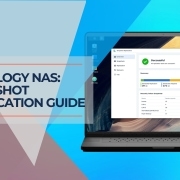

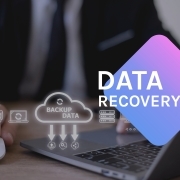
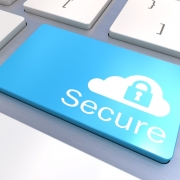
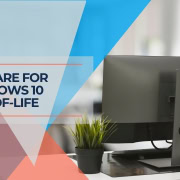

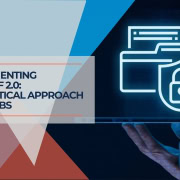


Leave a Reply
Want to join the discussion?Feel free to contribute!